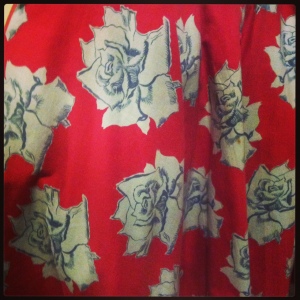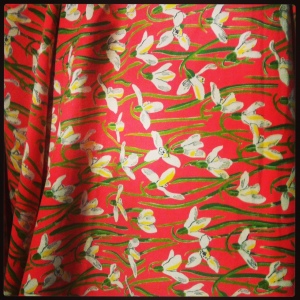Happy Springtime
March 22, 2015 at 6:56 pm | Posted in Uncategorized | Leave a comment Just a post to mark the arrival of spring. Hurrah! Here’s a little photo of some lovely flowers I bought at the market yesterday – what glorious colours. And everywhere there are crocuses (please don’t make me say ‘croci’) and daffodils. Plus magnolia which always surprises me by flowering so early – it seems an altogether more exotic tree that should come into bloom in high summer. Soon the blossom will arrive for that all too fleeting but magical time.
Just a post to mark the arrival of spring. Hurrah! Here’s a little photo of some lovely flowers I bought at the market yesterday – what glorious colours. And everywhere there are crocuses (please don’t make me say ‘croci’) and daffodils. Plus magnolia which always surprises me by flowering so early – it seems an altogether more exotic tree that should come into bloom in high summer. Soon the blossom will arrive for that all too fleeting but magical time.
For those of you who do read my ramblings on a semi-regular basis (not many I think!), I’m sorry the posts have become so erratic. Hopefully the longer days will spur me into action!
Five Go off on a Canal Boat (2)
August 31, 2014 at 12:54 pm | Posted in Dick, Eating and Drinking, Travel | 3 CommentsTags: canal boat, Emma Smith, ice cream, Maiden's Trip.
 Since our canal holiday earlier this year, I’ve been a lot more aware of the canal boats I see everyday. I often cycle along the Regent’s Canal towpath on my way to work, and can also see a little bit of it from my flat (a view that’s slowly being eroded by new buildings). There are a real mix of boats, from floating wrecks to beautifully cared for boats with painted names and extensive miniature-gardens of flowers, vegetables and herbs. You get to know some of them for short (or longer) periods of time, depending on the mooring regulations upon particular stretches of the canal (some moorings are long term; some are for a fortnight only).
Since our canal holiday earlier this year, I’ve been a lot more aware of the canal boats I see everyday. I often cycle along the Regent’s Canal towpath on my way to work, and can also see a little bit of it from my flat (a view that’s slowly being eroded by new buildings). There are a real mix of boats, from floating wrecks to beautifully cared for boats with painted names and extensive miniature-gardens of flowers, vegetables and herbs. You get to know some of them for short (or longer) periods of time, depending on the mooring regulations upon particular stretches of the canal (some moorings are long term; some are for a fortnight only).
After getting back from our Kennet & Avon jaunt, I read Emma Smith’s Maiden’s Trip, a fictionalised version of the writer’s experiences working on a barge during the war, when women were called in to help with the vital work of moving cargoes around the country via its waterways. She vividly describes the hardships – and pleasures – of life on the boats, from bad weather and bed bugs to tinned milk cocoa and kedgeree for tea. The maiden’s trip takes them from Limehouse Basin (15 minutes cycle ride from my flat), where they load up, to Birmingham and Coventry and back. The views from the canal encompass desolate and dirty urban wastelands as well unspoiled glorious countryside. They meet a range of people along the way and find friends and rivals among the barge folk, from those for who it’s just a day job to those whose whole lives are lived on the water.
If anyone has any other recommendations for stories set aboard barges, I’d love to hear them please. I keep thinking that Five Go off on a Canal Boat is a great, unwritten story, which I can vividly imagine elements of, in part drawn from my own trip in April: accidentally hitting another boat (perhaps this is Dick, getting distracted by lunch being prepared below deck), having a nasty encounter with some rude and angry men, suspicions being aroused as lights shine out from the boats at night – perhaps a midnight trip up and down the canal, picking up or dropping off some mysterious cargo… And of course this would all be fueled by plenty of ices and lemonade, boiled eggs for breakfast and burnt sausages for tea. This ice cream barge, currently moored near Victoria Park, would provide the perfect stopping off point for refreshments.
Fields, flowers and jams on Chatsworth Road
July 27, 2014 at 1:52 pm | Posted in Aunt Fanny, Eating and Drinking, Joan the Cook, Timmy | Leave a commentTags: Almond Kitchen, Botany, Botany Shop, Chatsworth Road, doughnnuts, Firefly Books, From Field and Flower, honey, jam, London Borough of Jam, marshmallow
I’ve just returned from a Sunday morning jaunt to Chatsworth Road, E5. I’ve not been down there for a couple of years and there are now so many lovely places to shop, eat and drink. Sunday (11-5) is market day. Here are a few my highlights from today’s visit:
This lovely gentleman at the ‘From Field and Flower‘ stall very easily talked me into buying a stawberry honey creme and some pollen (it’s full of vitamins and good for the joints). My friend and I were encourage to try lots of delicious Italian (and one English) raw honeys. I’ll definitely be going back once I’ve worked my way through the stock of Welsh honey I picked up on my recent-ish trip to Hay-on-Wye.
Some delicious home-made confectionery courtesy of The Almond Kitchen. The vanilla marshmallows were yummy and would be perfect for taking on a Famous Five expedition.
Ditto these doughnuts from London Borough of Jam. ‘Timmy’s just silly over those doughnuts’, we find out in Five Have a Wonderful for Time. Sadly, the lady in the LBJ shop informed us that the bakery who makes them forgot to put the jam in! So only custard available today.
But lots of jam in the shop itself. Amalfi lemon and vanilla, strawberry and rose, apricot and camomile and much more. Mmmmm. I can imagine Aunt Fanny or Joan the Cook making some delicious jams like these, using herbs and flowers from the Kirrin Cottage garden.
And another one for Aunt Fanny, the beautiful and serene Botany, which sells plants (lots of succulents in little pots and jars), local flowers, gifts for home and garden, and a wonderful curated selection of flora and fauna-themed books including novels, histories, pattern sourcebooks, growing guides and cookbooks.
Chatsworth Road also has lots of great charity and antique shops, fruit and veg shops and stalls, plus the excellent Firefly Books, where I picked up a copy of 1000 Children’s Books You Must Read Before You Grow Up (still a little time for me, then) for a mere £2. Bargain.
The Sun is Shining: Make Hay
July 26, 2014 at 9:32 am | Posted in Eating and Drinking, Learning Stuff | Leave a commentTags: Growing Communities, harvest festival, Haystack, High Tea, Lammas Day, scything, Walthamstow Marshes
Have you ever wanted to learn how to scythe and how to make a haystack? It’s just the sort of thing you can imagine the Five helping out with on the farm, before going into the farmhouse for a grand High Tea of ham and lettuce sandwiches, scones and cherry cake, all washed down with homemade lemonade.
If you fancy it, and you’re anywhere near east London next weekend, here’s your chance. From 1-3 August you can take part in a Community Haystacks event on Walthamstow Marshes. The Marshes were traditionally considered common land and are now managed by Lea Valley Regional Park. Hay used to be cut on Lammas Day (1 August), which is the festival of the wheat harvest and the first harvest festival of the year. For the second year in a row the traditional is being reinstated on Walthamstow Marshes by the Lee Valley Park Rangers and artists Kathrin Bohm and Louis Buckley.
On 1 and 2 August you can learn how to scythe with expert Colin Leeke. A two hour workshop costs £5 and includes tools and (much needed) refreshments. There will also be free talks on the Marshes from speakers including artist and architect Céline Condorelli, food grower and conservationist Fiona McAllister from Growing Communities, and artist Alana Jelinek. Sunday 3 August is haystack-making day! Bring a picnic and join in to help make the largest haystack the Marshes have seen for many a year. Apparently this will be Essex-style – I don’t know what this means but will look forward to finding out.
More information and details of booking for workshops can be found here.
5 Things to Do in Norwich
June 16, 2014 at 6:37 pm | Posted in Eating and Drinking, Fashion, Learning Stuff, Travel | Leave a commentTags: Book Hive, Dormouse Books, Fabulous Frames, Norwich, Norwich Castle, Ronaldo's Ice Cream, Verandah, Wonder of Birds
Just back from a lovely weekend in my home town of Norwich. I love that place. Here’s my pick of things to do from this visit.
Eat local. Loads of delicious produce from Norfolk is available on the market and from other delis and stores. Here’s some tasty looking asparagus from Louis’ on Upper St Giles, and some gooseberries and strawberries from the market. Mmmm!
Buy some books. The Dormous bookshop on Elm Hill has good secondhand books including Blytons and Penguins. The Book Hive is a new-ish but now much beloved institution. This picture is of their window display promoting their ‘Book Hive Year’ whereby you can sign up to receive one hand-picked book a month for a year.
Send a postcard home. The Famous Five always send their parents a card or two while they are away. I love this letterbox which is embedded in the window of stylish art/craft/gift shop, Verandah on Upper St Giles (the shop was formerly a Post Office). You can buy some gorgeous cards just up the road at Fabulous Frames (separate post on these to follow).
Learn stuff. Norwich Castle Museum is one good place to do this. It’s a museum in a castle! What could be better than that? They currently have an exhibition on called The Wonder of Birds: Nature: Art: Culture. It’s good. So good I bought a catalogue. No photos allowed inside the exhibition but there were stuffed birds aplenty, drawings, paintings, textiles, fashion, eggs and fossils. Extinct birds were represented too, including the Great Auk, whose replica egg would have delighted Jack of the Adventure series (keen ornithologist Jack dreams of one day spotting a Great Auk).
Eat local, part 2. Ronaldo’s ice cream stall, located on London St, does the best ices. They use local milk and cream, fruits, nuts and liquers. I had liquorice which I wasn’t sure I’d like. It was, needless to say, utterly delicious. If you can’t decide though, I’d make like the Famous Five and have at least three ice creams each:
“I advise you to start off with vanilla, go on to strawberry and finish up with chocolate.” – Julian, Five Have a Wonderful Time.
Tweet tweet
June 5, 2014 at 12:31 pm | Posted in Uncategorized | Leave a commentTags: bird song, Blackbird, twitter
 ‘I know that sometimes in the quiet evening, when I have been reading in the garden just before sunset, I have been so startled by a blackbird’s loud alarm-rattle that I have dropped my book and leapt to my feet in astonishment’ – Enid Blyton, Round the Year – Spring Time
‘I know that sometimes in the quiet evening, when I have been reading in the garden just before sunset, I have been so startled by a blackbird’s loud alarm-rattle that I have dropped my book and leapt to my feet in astonishment’ – Enid Blyton, Round the Year – Spring Time
As we know, Enid was an expert naturalist and knew the calls and tweets of many birds. To celebrate the 5th birthday of Famous Five Style – yes, it’s really been five years to the day since to my first post – I’m now going to be doing my own sort of tweeting @famousfivestyle
Please do come and follow me!
The Joy of Baking (Bread)
May 18, 2014 at 10:07 am | Posted in Aunt Fanny, Eating and Drinking | Leave a commentTags: bagels, banneton, ciabatta, E5 Bakehouse, Hackney Wild, Rye, sourdough
 For last year’s Christmas gift countdown challenge, I suggested the gift of a Bertinent bread-making class for Aunt Fanny. Well, I should have actually recommended the classes run by my local bakery, the E5 Bakehouse. After some (I thought quite subtle, but apparently not, hints), my very own Quentin got me a day of learning the secrets of sourdough for my Christmas present. I booked some time ago but due to the popularity of the classes only embarked upon this initiation on Thursday. Anyway, it was brilliant.
For last year’s Christmas gift countdown challenge, I suggested the gift of a Bertinent bread-making class for Aunt Fanny. Well, I should have actually recommended the classes run by my local bakery, the E5 Bakehouse. After some (I thought quite subtle, but apparently not, hints), my very own Quentin got me a day of learning the secrets of sourdough for my Christmas present. I booked some time ago but due to the popularity of the classes only embarked upon this initiation on Thursday. Anyway, it was brilliant.
We had a very good teacher called Pete. Pete is is a baker at the Bakehouse. Over the course of the day he taught us how to make 4 different breads, all with a sourdough starter. The breads were a 66% rye, ciabatta, bagels, and the Bakehouse’s signature loaf, the Hackney Wild. The bagels and ciabatta use the same white starter, but the rye and Hackney Wild have their own made with different proportions of rye, wholemeal and white flour.
The class assembled at 11am for coffee, bread and marmalade. A couple of us were locals, but many people had travelled from afar, including one gentleman who had left Darlington at 5am to make it to London in time. We spent the morning getting our different doughs going, giving them the occasional fold, and learning more about the history of sourdough, bread in general, and the heritage wheats that the Bakehouse likes to use (since the 50s, a hybrid, bred, type of wheat is generally used for bread-making, but many smaller growers are trying to revive older grains). One thing I didn’t know was that the name ‘ciabatta’ (meaning ‘old man’s slipper’) was only coined fairly recently, as an Italian reaction to the invasion of other foreign breads (baguettes and the like) into Italy.
 After a bread for lunch (locally foraged and grown salad, including delicate and delicious wild garlic, and sandwiches made with Bakehouse bread, of course) we began shaping our loaves. We learnt how to be gentle with the bread, shaping round loaves with a little gentle lift and squeeze (oh yes) before popping them in a banneton (a cane basket that helps the bread develop and keep its shape during the time it takes to prove).
After a bread for lunch (locally foraged and grown salad, including delicate and delicious wild garlic, and sandwiches made with Bakehouse bread, of course) we began shaping our loaves. We learnt how to be gentle with the bread, shaping round loaves with a little gentle lift and squeeze (oh yes) before popping them in a banneton (a cane basket that helps the bread develop and keep its shape during the time it takes to prove).
Bagel were interesting to make. Pete, our teacher, showed us two techniques for this. One involved rolling a sausage of dough and then squeezing this firmly together and giving the dough a roll with the palm of your hand until the join is sealed. The second was fun too. This consisted of poking a hole into a round piece of dough and then using your index fingers to roll and stretch the hole out from the inside. After the bagels sat and proved for a bit we poached them in boiling water and bicarbonate of soda before dressing them with salt, sesame or poppy seeds and popping them into the bread oven to bake.
 The ciabatta, rich with olive oil, was silky and slippery to roll and stretch out, while the Hackney Wild and the 66% rye were nice and firm and satisfying to shape. One valuable lesson we learnt was about to how to recreate some of the qualities of the bread oven at home. Key to this is introducing some element of steam. This prevents a crust forming too quickly which restricts the development of your loaf. Some ways to do this are by putting a tray of water, or some ice cubes, into the bottom of your oven while the bread bakes. Another interesting method that Pete demonstrated to us is to bake the bread inside a cast iron cooking pot. The bread produced its own steam and is able to swell and rise evenly before you take the lid off for the final 10 minutes of cooking time. Pete made two loaves – one in the pot, one just on a tray – and the difference was remarkable.
The ciabatta, rich with olive oil, was silky and slippery to roll and stretch out, while the Hackney Wild and the 66% rye were nice and firm and satisfying to shape. One valuable lesson we learnt was about to how to recreate some of the qualities of the bread oven at home. Key to this is introducing some element of steam. This prevents a crust forming too quickly which restricts the development of your loaf. Some ways to do this are by putting a tray of water, or some ice cubes, into the bottom of your oven while the bread bakes. Another interesting method that Pete demonstrated to us is to bake the bread inside a cast iron cooking pot. The bread produced its own steam and is able to swell and rise evenly before you take the lid off for the final 10 minutes of cooking time. Pete made two loaves – one in the pot, one just on a tray – and the difference was remarkable.
 I came home laden with lots of bread and three pots of starters (plus a snazzy E5 scraper/cutter). As I write, there is still one ciabatta, a quarter of rye and two bagels left, plus a frozen Hackney Wild dough in the freezer. Whew! But to keep in practice, I’m currently creating a new rye leaven from my starter (you add a bunch more flour and water and leave it out of the fridge to spring to life) so I can bake some more tomorrow.
I came home laden with lots of bread and three pots of starters (plus a snazzy E5 scraper/cutter). As I write, there is still one ciabatta, a quarter of rye and two bagels left, plus a frozen Hackney Wild dough in the freezer. Whew! But to keep in practice, I’m currently creating a new rye leaven from my starter (you add a bunch more flour and water and leave it out of the fridge to spring to life) so I can bake some more tomorrow.
Artists Textiles
May 17, 2014 at 4:04 pm | Posted in Aunt Fanny, Fashion | 1 CommentTags: Artist Textile, Fashion and Textile Museum, Graham Sutherland, Horrockses, John PIper, Marc Chagall, Rockwell Kent
A largely visual post today, after my visit to the penultimate day of the Artist Textiles exhibition at the Fashion and Textile Museum in Bermondsey, South London. The exhibition focuses on the work of 20th century artists such as Picasso, Alexander Calder, Barbara Hepworth, John Piper, Sonia Delaunay, Raoul Dufy and many others, exploring their work in the area of textile design. This was one way in which ordinary people were able to engage with, purchase and surround themselves with modern art – fabric for curtains, printed scarves and cotton print dresses were much more affordable and practical than large sculptures or paintings. Everyone could own a Picasso after he finally agreed to produce some designs for Dan Fuller of Fuller Fabrics in the 1950s.
The exhibition is beautiful and often works are on open display, enabling you to get up close to see the textures and colours of the fabric. Here are just a few of my favourites – all picked with the tastes and interests of Aunt Fanny, unsung hero of the Famous Five, in mind.
 Marcel Vertes, ‘Radishes’, c. 1945
Marcel Vertes, ‘Radishes’, c. 1945
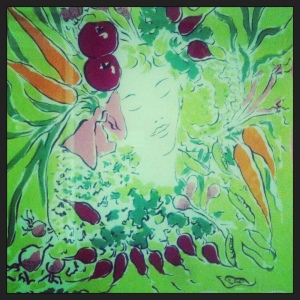 Marcel Vertes, ‘Vegetable Patch’, 1944
Marcel Vertes, ‘Vegetable Patch’, 1944
I think Aunt Fanny would appreciate these. She’s a keen gardener and as a woman of the 1930s/40s/50s/60s would have thought nothing about growing produce to feed her (very) hungry family. Vegetable Patch is actually a screen printed silk headscarf. Can’t you just imagine her donning this to pop down to the Kirrin shops?
 Marc Chagall, ‘Belles Fleurs’, 1956
Marc Chagall, ‘Belles Fleurs’, 1956
This is a furnishing textile by Chagall. Maybe Fanny would like to cover her sofa, or make a nice pair of floral curtains for the bedroom from this. We know she enjoys flowers.
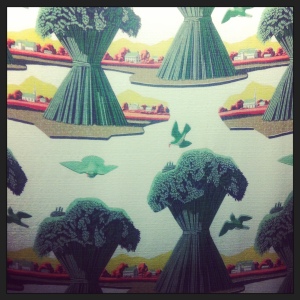 Rockwell Kent, ‘Harvest Time’, 1950
Rockwell Kent, ‘Harvest Time’, 1950
Country woman Fanny would probably drawn to this evocative harvest image of American Rockwell Kent’s screen-printed furnishing fabric. Kitchen curtains perhaps?
 John Piper, ‘Chiesa De la Salute’, 1960
John Piper, ‘Chiesa De la Salute’, 1960
Perhaps Uncle Quentin took Fanny to Venice for their honeymoon? If so, she would no doubt like to be reminded of more romantic times by John Piper’s characteristically atmospheric screen-printed fabric, produced for Sanderson.
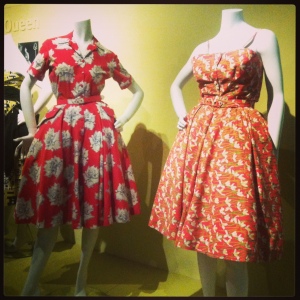 Graham Sutherland, fabric designs for Horrockses dress, c. 1949
Graham Sutherland, fabric designs for Horrockses dress, c. 1949
The Fashion and Textile Museum has previously devoted a whole exhibition to the Lancashire off-the-peg fashion company Horrockses, whose dresses were worn by royalty and housewives alike (Princess Margaret was frequently snapped in affordable Horrockses outfits). Aunt Fanny would have almost certainly owned frocks made by the company, who were hugely popular in the 40s and 50s. Here are details from these two dresses, in roses and snowdrop patterns. Mmmm.
Know Your Swallows, Swifts and Sand Martins
May 13, 2014 at 8:04 pm | Posted in Cycle Rides, Learning Stuff | Leave a commentTags: Enid Blyton, house martin, National Trust, Nature Lover's Book, RSPB, sand martin, swallow, swift
…and House Martins too, but that didn’t fit with the alliterative title of this post.
As I was riding home from work tonight I saw some swallows. This is always a lovely sight, especially early in the year. Or were they swifts? Or martins? I wonder this to myself EVERY year. Although I have consulted Enid’s nature books in the past I’m afraid it’s failed to sink in. So here are some tips for identifying swallows, swifts and martins from each other, for me and also for you, if indeed you have this problem.
The Barn Swallow
 From Enid Blyton’s Nature Lover’s Book:
From Enid Blyton’s Nature Lover’s Book:
‘He is a well-known bird, because of his long, forked tail. His black is steel0blue, his throat and forehead are chestnut-coloured, and he has a blue-barred chest.
Swallows build their nest sin barns of out-buildings, on beams or rafters. The nest is a saucer of mud, and is lined with feathers or grass. The eggs, which are long and narrow, are white, speckled with grey-brown.
The swallow has a musical little twitter that sounds like “feetafeetit, feetafeetit”. It is very pleasant to listen to listen to on a warm summer’s evening.’
From the RSPB Magazine:
‘The one with the long, forked tail: steel blue above, pale below (white to bright peachy colour) but with a clean-cut dark throat […] Swallows typically fly low down, flying fluently with sinuous swerves and more fluttering twists, often around livestock, along the edges of open fields, over cricket pitches and the like’.
The House Martin
‘The one with the white rump: blue-black above with browner wings, with a broad white band above the tail, and all-white below from chin to tail. Nests in quarter-sphere mud cups beneath eaves’.
From Enid Blyton’s Nature Lover’s Book:
‘Many people think that the house martin is the barn swallow, for they are rather alike. The martin belongs to the swallow family, and leads the same aerial life. He is steel-blue above and white below. He has a white patch on his back, and this and his shorter tail will help distinguish him from the swallow. He, too, is a migrant.
The martin likes to build his nest of mud under our eaves, stuck against the wall. He lines it softly. The eggs are long and are pure white.
The martin, like the swallow, has a pleasing twitter.’
The Sand Martin
From the RSPB Magazine:
‘The brown one: all mid-brown above, white below with a brown chest band. This is a tiny bird, more fluttery than the others, often above or close to water.’
The Swift
From Enid Blyton’s Nature Lover’s Book:
 ‘The swift has no song or twitter, only a loud and harsh screech. His name is a good one for he is one of our fastest flying birds’.
‘The swift has no song or twitter, only a loud and harsh screech. His name is a good one for he is one of our fastest flying birds’.
One thing that is lovely about Enid Blyton’s writing is the way she incorporates factual information into her narratives. The first part of the Nature Lover’s Book tells a series of short stories set across the course of the year. John, Janet and Pat go for a series of walks with Uncle Merry and his little black dog Fergus. Uncle Merry opens their eyes to all sorts of things that are around them, from flowers in January to nightbirds, moths and nocturnal beetles in June.
This is from ‘A Second Walk in May’
‘One morning John went into the garden and heard the swallows twittering together. He loved their little voices saying “feetafeetit, feetafeetit.” He looked up and saw that another bird was flying with them.
“That must be the swift,” said John to himself. “It’s sooty black, as Uncle Merry said. What great sickle-shaped wings it has! It looks like a flying anchor!”.
Enid Blyton’s Nature Lover’s Book has beautiful drawings by Donia Nachsen, as seen above. I was very lucky to discover a second hand copy of this in the National Trust bookshop at Blickling Hall in Norfolk while on a cycling tour a couple of years ago.
Create a free website or blog at WordPress.com.
Entries and comments feeds.





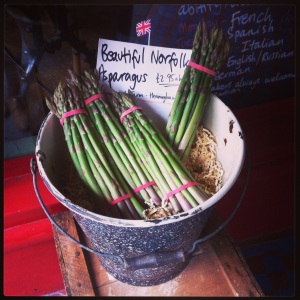


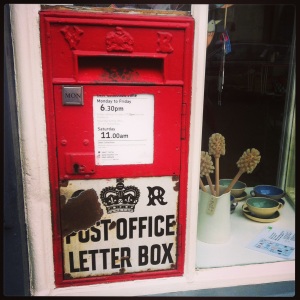
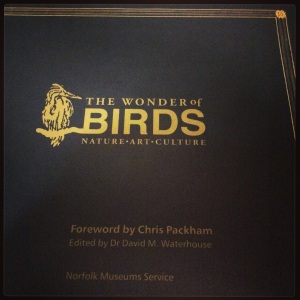

 Those pictured below are my own effort. The recipe came courtesy of VisitWales.com and can be found on my recipe pages, with a couple of my own tweaks.
Those pictured below are my own effort. The recipe came courtesy of VisitWales.com and can be found on my recipe pages, with a couple of my own tweaks.



